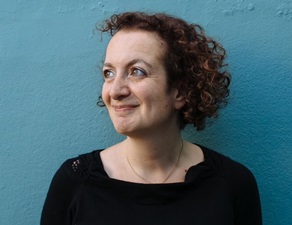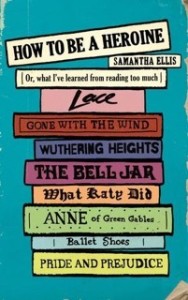 “How to Be a Heroine” by Samantha Ellis is an interesting book with an interesting premise. Samantha Ellis was raised by Iraqi-Jewish parents in London. As she was growing up she felt like an outsider and struggled with the constraints of a culture that wanted to isolate her. She escaped to the world presented by books and tried to be find alternative models in the heroines of the books.
“How to Be a Heroine” by Samantha Ellis is an interesting book with an interesting premise. Samantha Ellis was raised by Iraqi-Jewish parents in London. As she was growing up she felt like an outsider and struggled with the constraints of a culture that wanted to isolate her. She escaped to the world presented by books and tried to be find alternative models in the heroines of the books.
 “How to Be a Heroine” takes us through Samantha Ellis’s journey of self-discovery. As the cover says, “she’s been trying to be Cathy Earnshaw of Wuthering Heights when she should have been trying to be Jane Eyre.” Ellis returns to the heroines that have been most important to her and rediscovers what is powerful about their characters, as well as finding out that some of them were inappropriate role models all along.
“How to Be a Heroine” takes us through Samantha Ellis’s journey of self-discovery. As the cover says, “she’s been trying to be Cathy Earnshaw of Wuthering Heights when she should have been trying to be Jane Eyre.” Ellis returns to the heroines that have been most important to her and rediscovers what is powerful about their characters, as well as finding out that some of them were inappropriate role models all along.
Ellis cites an eclectic collection of books that reflect what she was reading and who she felt herself to be at different stages of her life. She questions the decisions made by her heroines or made for them by others. The heroines are an assortment: Cathy Earnshaw, Jane Eyre, Jo March, Sylvia Plath, Virginia Wolff, and many others. I liked the book for the variety of heroines introduced and I put some of the books cited on my “to read” list.
But I also questioned the premise of the book because I have never looked to fictional, literary characters as heroines. I enjoy getting lost in a book and I read a lot. But when I am looking for role models, I look at real-life women: my mom, the clergy sisters who paved the way in ministry, my friends who struggled and overcame, historical women who achieved great things, women who endured despite lack of recognition or fame. I also have many men on my list of role-models (Jesus, my dad, professors, clergy brothers) because we all learn from each other every day.
Who do you look to as a role model? Who are your “heroines?” I found reading “How to Be a Heroine” a springboard for reflection on those who have been, and continue to be, my heroines – male and female. I am grateful to them for what they have taught me and for the models of Christian living that they continue to be.
